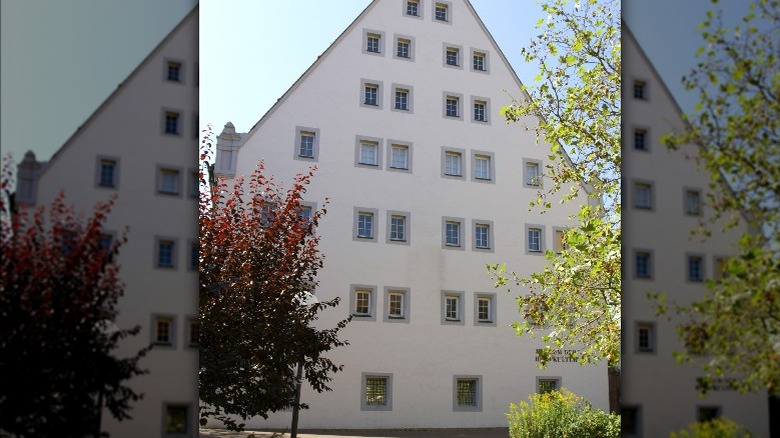The Bread Museum You've Got To See Before You Die
Bread is an staple of many people's everyday life. For breakfast, you might have had toast. For lunch, maybe you had a sandwich. You may have even gone out to a restaurant and gotten complimentary bread or rolls. Bread is all around us and it's been a part of humanity for generation upon generation.
It's hard to pin down who exactly invented bread, but the best guess is that the baked food item originates from the Middle Eastern regions (via Live Science). No matter when it was first made, there's no denying bread has played and still plays a key part in cultures all across the world. France, for example, is well-known for its baguettes, which were purportedly invented either in the 1800s likely popularized in the early 1900s, per Baking History. In Jewish culture, popular breads such the flatbread matzo and or the braided challah are served during religious holidays such as Passover or during the Sabbath (via Food and Wine Magazine).
In Germany, there's a place dedicated to showing just how much of an impact bread has made on human culture.
You can find the Museum of Bread Culture in Ulm, Germany
In the town of Ulm in Germany, you'll come across what appears to be a plain white building that appears more like a house than a museum. But if you were to go inside, you'd discover a world dedicated to the wonders of bread in all shapes and sizes. According to Atlas Obscura, the Museum of Bread Culture began in 1955 by Willy Eiselen and his son Hermann Eiselen. The museum was at first an association, then became an exhibit in the 1960s, and came under the control of a charitable foundation in 1991.
But why is there a museum dedicated to bread? As explained on the museum's website, its purpose is to present how everything in basic life, from culture to the economy, is interconnected with food. While bread is indeed the focus, the Museum uses it as a medium to explore different topics, such as the science behind making bread and the relationship between grain and different cultures. Art, technology, nutrition, and more are all explored. While you'll find plenty of interesting facts, the bread itself isn't on display because of the founders' belief that the food staple isn't meant to be put on display as a museum piece, per Atlas Obscura — it's meant to be enjoyed and eaten.

